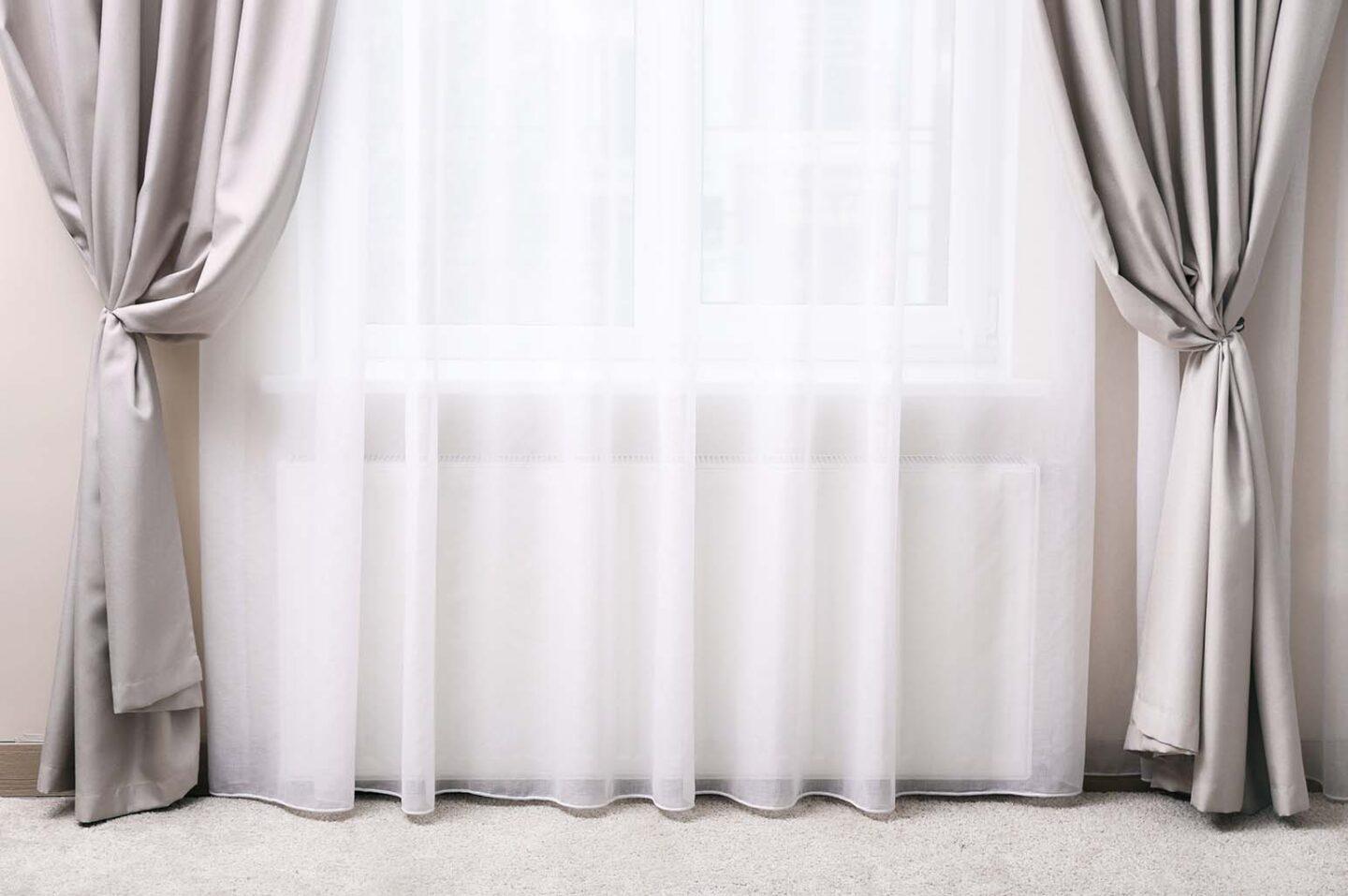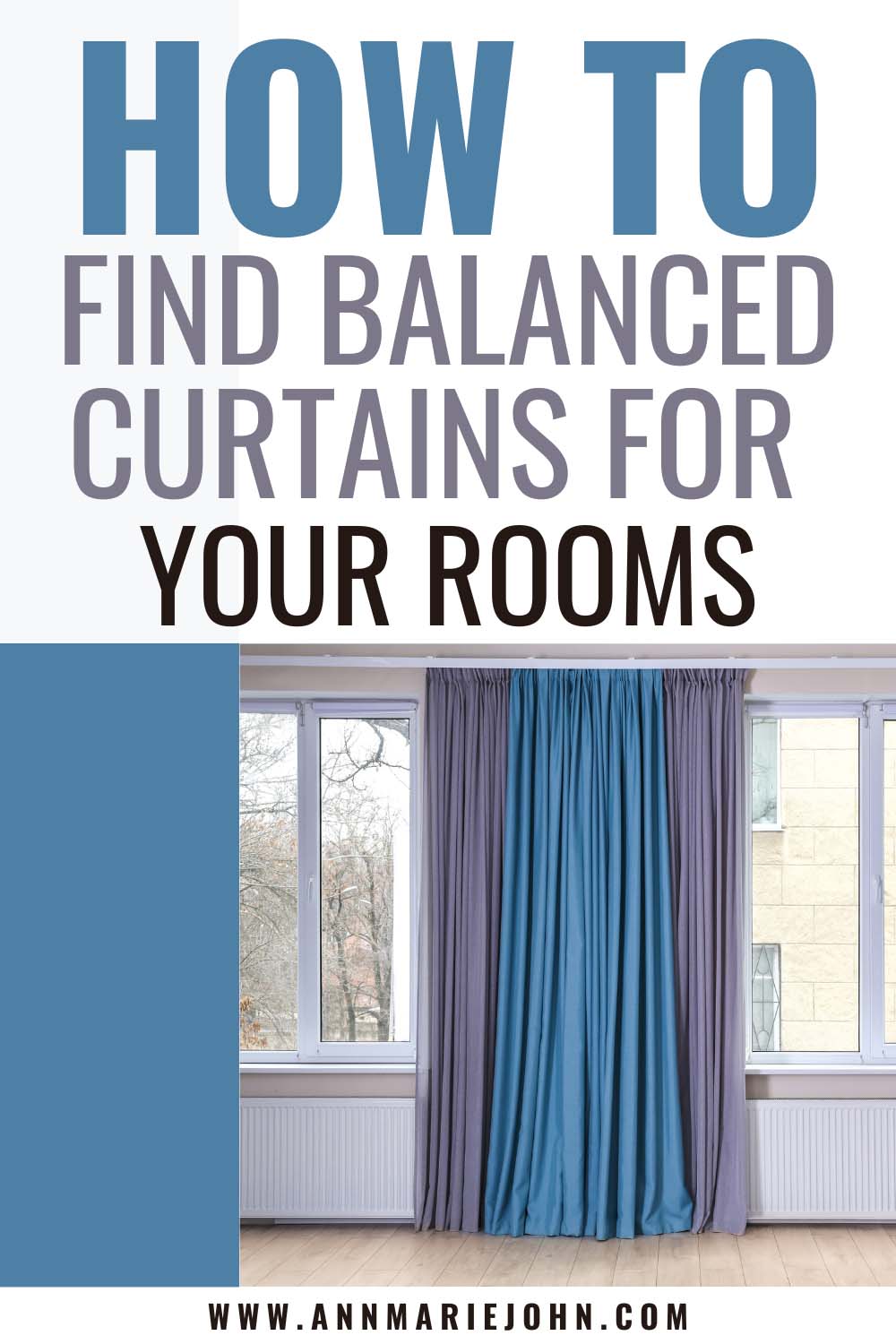Discover the perfect balance of light, privacy, and style with our guide to selecting curtains for your rooms. Achieve the ideal ambiance effortlessly.

Curtains can let in light, improve privacy, and add style to your rooms, but not usually at the same time. Getting these three qualities in a set of drapes isn’t always straightforward.
The good news is that options do exist. Once you understand how to work with curtains, you can find drapes that meet your requirements, helping you avoid any annoying compromises.

Start With The Function Of The Room
The first step is to start with the room’s function. You want your drapes to be helpful after you install them, not just window dressing.
For this reason, we always go room by room. We recommend starting in the living room and making your way to the bathroom when considering drapes and window coverings.
Living Room
When selecting drapes for the living room, you want something that gives the space a natural, airy feel. Prioritize incoming light so you can enjoy the mornings or evenings either side of work or at the weekend.
The best curtains for the living room are sheer or linen. These have gaps and holes that let more light through, helping to make your spaces more welcoming.
You can sometimes opt for thicker curtains in the living room, but these won’t give you as much flexibility. Thick drapes can complement some interior themes and communal spaces, but they won’t offer privacy without blocking out the light.
Bedroom
The bedroom is another room where you will need to consider the pros and cons of different curtain styles. Ideally, you want something that can block out light and ensure you have a more restful night’s sleep.
The best option here is thick blackout curtains. These have a thicker weave that prevents annoying street lights from entering your sleeping spaces and stopping you from getting the shut-eye you need.
However, if you live in a darker area, you might want to prioritize privacy. In these cases, it can help to have a combination of blinds and curtains in the bedroom. This way, you can let in some light while getting changed without anyone being able to peer through the window.
Bathroom
Generally, drapes aren’t the best option for the bathroom. Better solutions include faux wood or vinyl blinds that won’t warp in the presence of moisture. If you want privacy, use textured glass or take advantage of windows placed high on the walls.
Kitchen
The kitchen is another functional space where blind or curtain choice matters. Most people choose to get roller blinds or Roman shades in the kitchen. These can be easier to clean and don’t tend to attract as much cooking grease in poorly ventilated kitchens.
Which Fabric Should You Choose?
When it comes to balancing all the desirable characteristics above, your fabric choice matters. Selecting the right option will yield better long-term results.
Use an online fabric store for upholstery fabric by the yard. Sellers will often offer more material choices than stores looking to sell identical designs to the mass market.
Sheer
Sheer fabrics are best for people who want to let more light into the room and aren’t so concerned with privacy. This curtain material will make it hard for people to see exactly what you are doing, but they might still be able to make out your silhouette.
Linen
You might also want to use linen. This material provides a natural, textured look and lets most of the light through, just like sheer. However, it gives you a little more privacy and comes in more styles, making it more suitable for varied interior themes. Linen prints are often very attractive and suitable for contemporary homes or traditional styles.
Blackout
Blackout fabrics are an option for bedrooms, as discussed above. However, they are also helpful in rooms where you want to block out light during the day for work. For example, many people install them in media rooms and home offices. Having proper curtains prevents screen glare and enables more precise color work.
As the name suggests, these curtains block out most of the incoming light, keeping rooms dark during the day. Most options are heavy fabrics with a tight weave and often additional layers built in to prevent light from passing through. When installing these, check that you have a sufficiently strong curtain pole or fitting system. These fabrics can be heavy.
Lined
Finally, you can opt for lined fabrics. These offer roughly the same light-blocking capabilities as blackout materials but also improve designs. Fabrics have light-blocking materials on the inside and design-approved styles on the outside.
Of course, the downside is the price. The more material you order, the more expensive the curtains will be.
How To Layer Your Curtains
Sometimes, it isn’t possible to find a fabric that does everything you want it to in a specific room. That’s where layering can be so helpful.
For example, if you want plenty of light in the bedroom during the day but want to block it at night, then combining blackout curtains with blinds or sheer drapes could help. You could open the curtains during the day and still enjoy plenty of privacy.
You could also do something similar in your lounge or living spaces. Putting sheer drapes closest to the window and then adding decorative drapes in front of them lets you choose the level of light and privacy you want in the room at any given time.
How To Style Your Curtains
Once you choose your fabrics and layer your curtains, the final step is to style them. When done properly, drapes can bring a room to life and make it feel more personal.
Start by looking for colors and patterns that match your existing décor. Add attractive valances, tie-backs, and trims to the space, elevating its appearance.
Some of the most attractive installations are purely decorative. These are a great option if you already have blinds but want to make your rooms more attractive.
Finally, if you are styling your windows yourself, make sure you understand how to cut them to size. Get the right width and length of fabric before you start.
